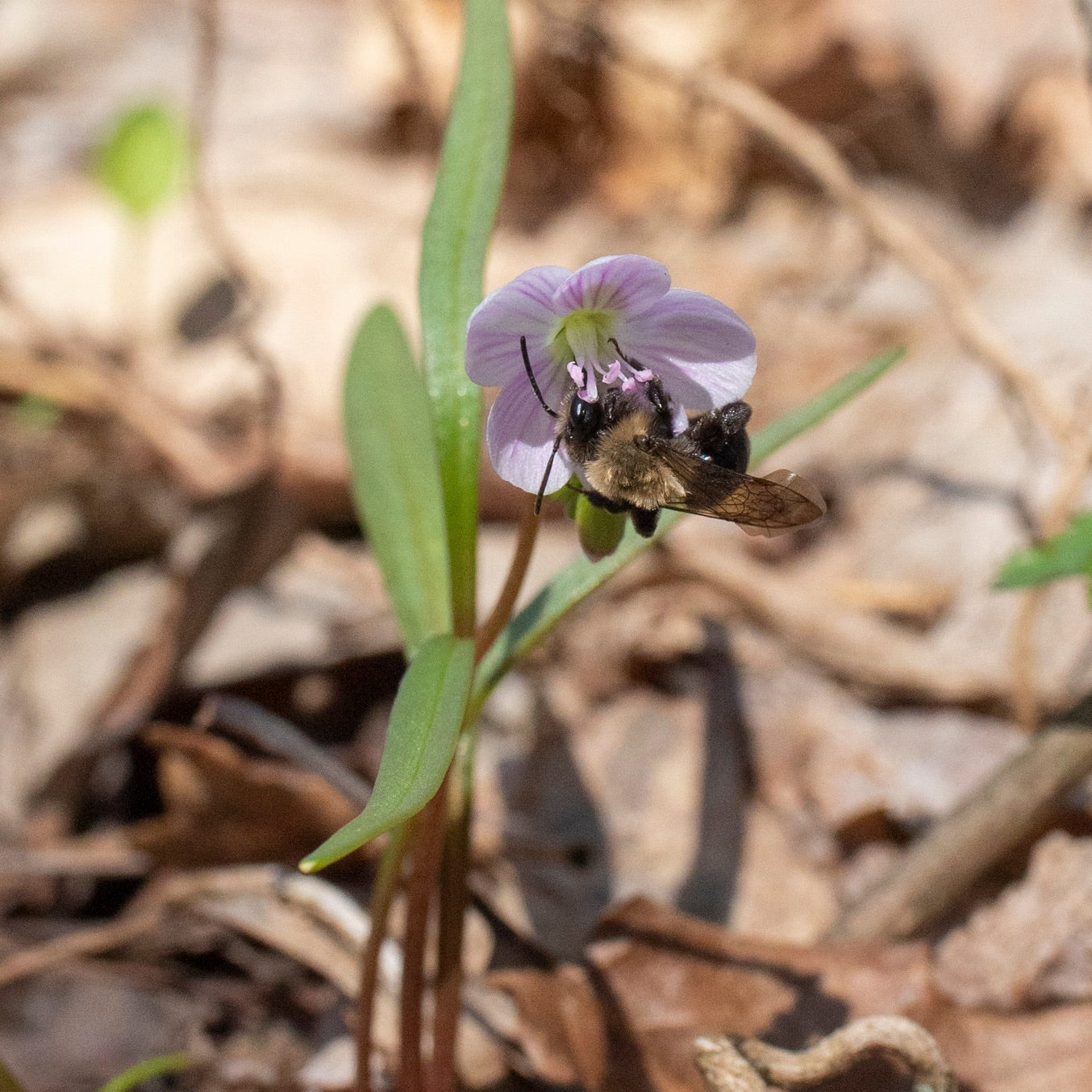Spring beauty
Claytonia virginica
Claytonia virginica
Couldn't load pickup availability
Sun/shade: Full sun to full shade
Soil moisture: Medium
Height: 0.5'
Flowering period: April
Deer resistance: Medium
In April, spring beauties bring a soft infusion of pink to the forests and fields of northeast Ohio. An ephemeral species, the plant rapidly fades after flowering, and by summer no trace of leaves or stems remains.
Like other spring ephemerals, spring beauty blooms before trees have fully leafed out, taking advantage of the increased light availability of the open forest canopy. For this reason, spring beauty can be planted in the full shade of a tree even though the plant requires a greater degree of sunlight in the springtime. As long as the tree in question sheds its leaves, spring beauty will have the sunlight it needs.
In terms of soil conditions, spring beauty does best in soils of moderate moisture. The plant spreads through self-seeding as well as asexually via offsets from its bulb, forming large colonies under ideal conditions. Due to its showy flowers and dainty form, spring beauty is appropriate for both formal and naturalistic gardens.
In natural situations, the primary pollinator of spring beauties is the spring beauty mining bee. The bee’s larvae require the pollen of spring beauties as their food source, and the bee and plant are thus closely aligned. If one’s garden is near a woodland that also harbors spring beauties, then one’s own plants will likely attract the spring beauty mining bee.
Another important pollinator of spring beauties is the bee fly. These unusual creatures have a very long snout and a stout furry body like that of a little bear. The bee fly’s dense hair insulates it, allowing it to be active during cool temperatures early in the year. Bee flies have the ability to obtain nectar while hovering, making their floral visits especially interesting to observe.
Due to their early bloom time, spring beauties are an excellent food source for flower-visiting insects at a time of year when floral resources can be scarce. In all, over 100 species of insects have been documented visiting spring beauties.
Photos by Ashley Keesling.



